TVs & Audio | January 23, 2024
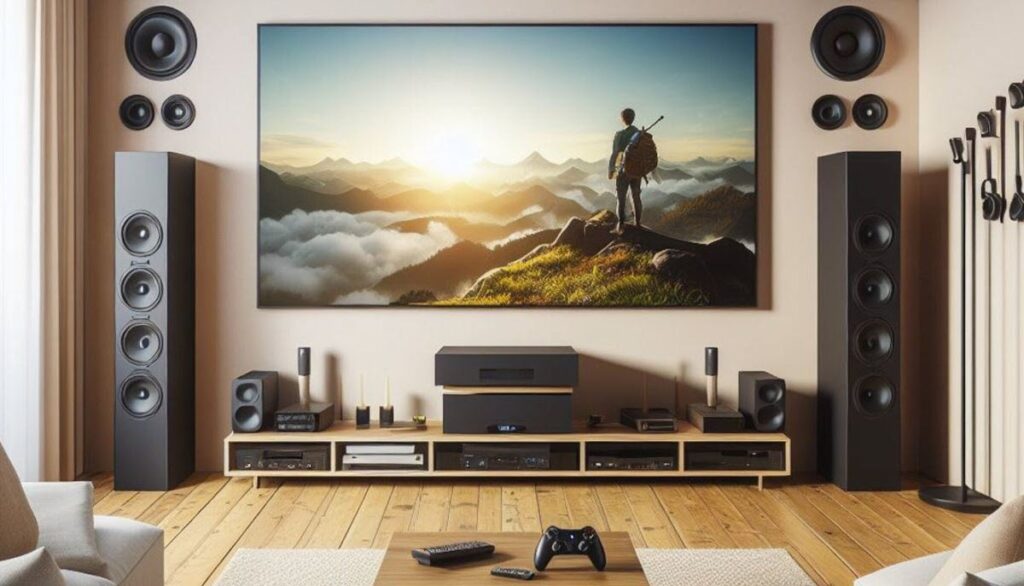
The size of our electronic devices doesn’t evolve linearly. Like mobile phones, televisions have gone from being large and bulky to having a more reduced and discreet size with the arrival of flat screens. However, in recent years, it has become increasingly common to ask, “What huge TV should I buy for the living room?” TVs with 55 and 65 inches have become the norm, and the trend seems to be moving towards even larger diagonals. In recent technology fairs, the barrier of 100 inches has been surpassed, and more users will likely opt for these large-format smart TVs for their living rooms.
Beyond feelings, the data handled by manufacturers also reflects that we increasingly like bigger TVs. In 2023, TV sales decreased by 10% (2.6 million units), still marked by the effects of the pandemic, which led many people to upgrade their TVs during the lockdown. However, what increased was the sales of large-sized TVs: “What grows the most, although it represents a relatively small part of the market still, is the large size,” said Nacho Monge, Business Director of Samsung Electronics Iberia, in a virtual meeting with journalists (including this medium).
Although the strong commitment to OLED technology will continue in 2024, manufacturers also have their eyes on large TVs. TCL predicts that by 2027, the standard TV size will be between 65 and 75 inches, and in their catalog, several models above 80 inches are already available.
These TVs are visually attractive and impactful, and although their sales are growing compared to more common sizes in living rooms, they still represent a niche market that is not for everyone, and not just because of the economic aspect. If you wonder what to consider when buying a large TV, it’s evident that cost is a decisive factor, but there are other details that often go unnoticed by users. Some of them include the size of the building’s elevator, as in certain cases, fitting a 75-inch TV into them is already challenging.
The panel resolution and the dimensions of the living room or the room where the TV will be installed will also be essential to determine the suitable diagonal size to purchase. No matter how much we want a screen that makes us feel like we’re at the movies, the ideal purchasing decision will be determined by both the resolution (usually 4K) and the distance at which we will be sitting. Ideally, the screen should occupy between 30º and 40º of the person’s field of vision, and the recommended distance by the Society of Motion Picture and Television Engineers (SMPTE) is between 2.6 and 3.4 meters for 85-inch TVs and between three and four meters for 98-inch TVs, provided they have 4K or UHD resolution (the distance will need to be even greater if the resolution is 1080p).
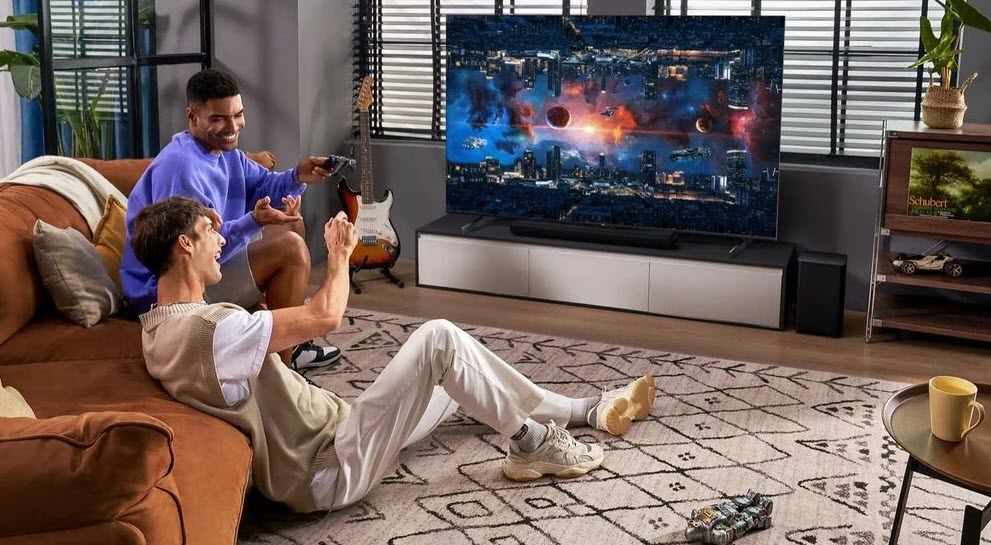
Other aspects to consider when buying a large TV include the usual lighting in the living room or the technology incorporated into the panel. OLED or QD OLED TVs offer better performance in dedicated cinema rooms or conditions with low light, while models with MiniLED or MicroLED technology are more recommended for well-lit rooms since they have smaller LED lights, offering greater brightness. MiniLED TVs are the most common among large-sized TVs.
Lastly, those who plan to place the TV on a piece of furniture instead of mounting it on the wall will also need to consider the position of the legs or the stand it comes with. These are devices that approach or exceed two meters in width, so it’s essential to consider the type of furniture they will be placed on. Generally, TVs over 80 inches usually have legs on both sides, some even adjustable in height to facilitate the placement of a soundbar. The central stand is not as common, although there are some models, such as LG’s 86-inch TVs, with a unique ‘U’ shaped design that can complicate placement on narrow tables.
One of the manufacturers taking the large-sized screens seriously is TCL. While waiting for their latest proposals, including a 115-inch QD-Mini LED TV, to hit the market, models like the TCL 98C805 stand out. This 98-inch TV from their C80 series is available for sale starting from 4,070 euros, experiencing a price reduction from its initial launch price of over 5,000 euros.
The TCL 98C805 features a 4K resolution panel (3,840 x 2,160 pixels) and MiniLED technology, a backlighting system with over 1,300 local dimming zones that darken and illuminate based on each scene, providing a very precise contrast and detailed images in darker scenes. It has a native refresh rate of 144 Hz, making it an ideal model for enjoying live sports events (football, Formula 1, tennis, etc.), as well as action movies or racing video games with a lot of movement. Brightness, color vibrancy, and color processing are other strengths of the 98C805.
For gamers looking for a TV of this size, it can also be utilized to its full potential, reaching a variable refresh rate of 240 Hz (at the cost of losing some image detail), and it also has a low latency mode and a Game Master mode to make the most of demanding titles. One drawback is that only two of its four HDMI ports are of the 2.1 standard, more suitable for gaming, although this is the standard for premium TVs of these sizes.
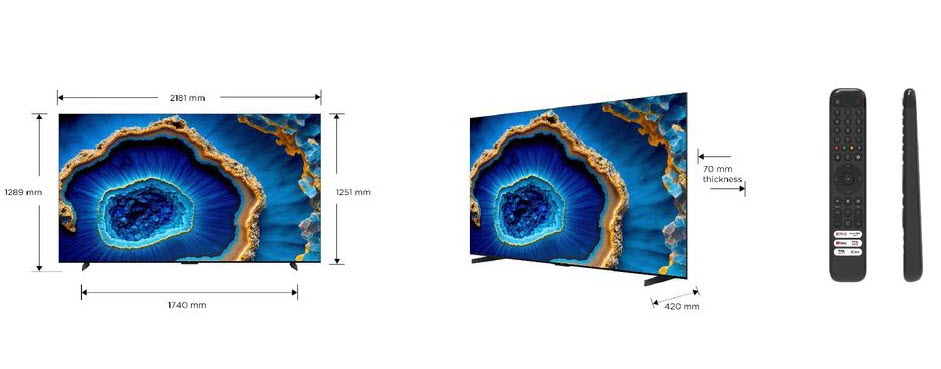
If the more than 4,000 euros for the previous model exceed your budget, TCL also has some more affordable alternatives, albeit with a slightly smaller screen size: 85 inches. This is the case with the TCL 85C645, a QLED TV priced at 1,700 euros. Since it uses LED technology instead of MiniLED, the dimming won’t be as precise, and the ‘blooming’ or halo effect will be more noticeable, but it still offers notable image quality with well-defined and clear colors.
In terms of sound, it supports Dolby Atmos and DTS: Virtual-X, providing a truly immersive experience with its two speakers. Its power is 30 watts, which may be insufficient for large living rooms, so adding a soundbar could be a sensible option.
This TV also targets gamers, featuring three HDMI 2.1 ports, Auto Low Latency Mode (ALLM), and a game accelerator that sets the refresh rate at 120 Hz for a smoother gaming experience.
Samsung is also jumping on the bandwagon of large 98-inch TVs, although their prices may be prohibitive for most users. The QN90 Neo QLED was initially released at a staggering 13,000 euros but can now be found for 8,000 euros. While still a significant investment, it represents an almost 40% reduction.
The Samsung QN90 Neo QLED also features MiniLED technology, providing better control and precision of light in dark or bright areas. Additionally, it has a Neo QLED 4K processor with artificial intelligence, resulting in improved sound emission and optimized 4K image quality. This TV has four speakers, enhancing the realistic sound experience by reproducing sound where the action takes place.
Some drawbacks include the price and the presence of the Tizen operating system, which might deter users accustomed to Android TV or Google TV. It also has only one HDMI 2.1 port, limiting its gaming capabilities.
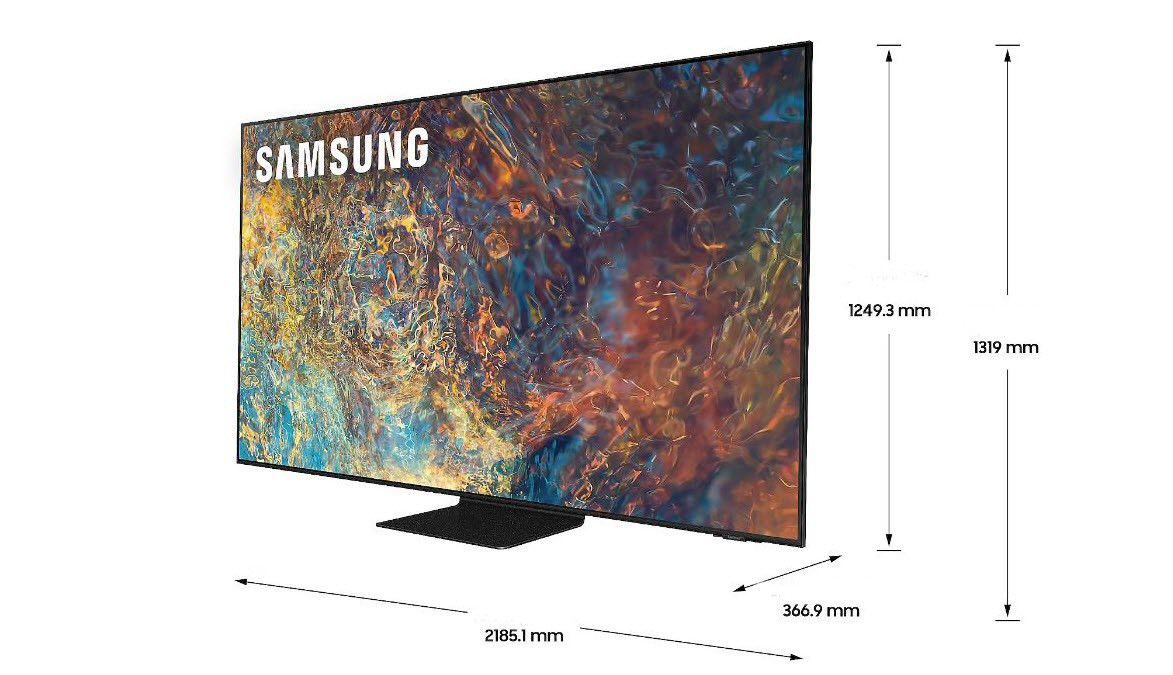
On the other end of the spectrum, we have the Samsung CU8000, a slightly smaller TV (if an 85-inch model can be considered small) available for less than 1,300 euros at specialized stores. While it comes with more limited features at this price point, it still offers good performance in rooms with low lighting. However, the absence of local dimming zones found in MiniLED models makes it suffer a bit more in well-lit rooms.
The CU8000 has several positive aspects, such as image quality, scaling traditional TV content to 4K, and playing series and movies from streaming platforms in HDR. Additionally, its design includes some surprises, such as the adjustable height of its legs, facilitating the installation of a soundbar under the TV.
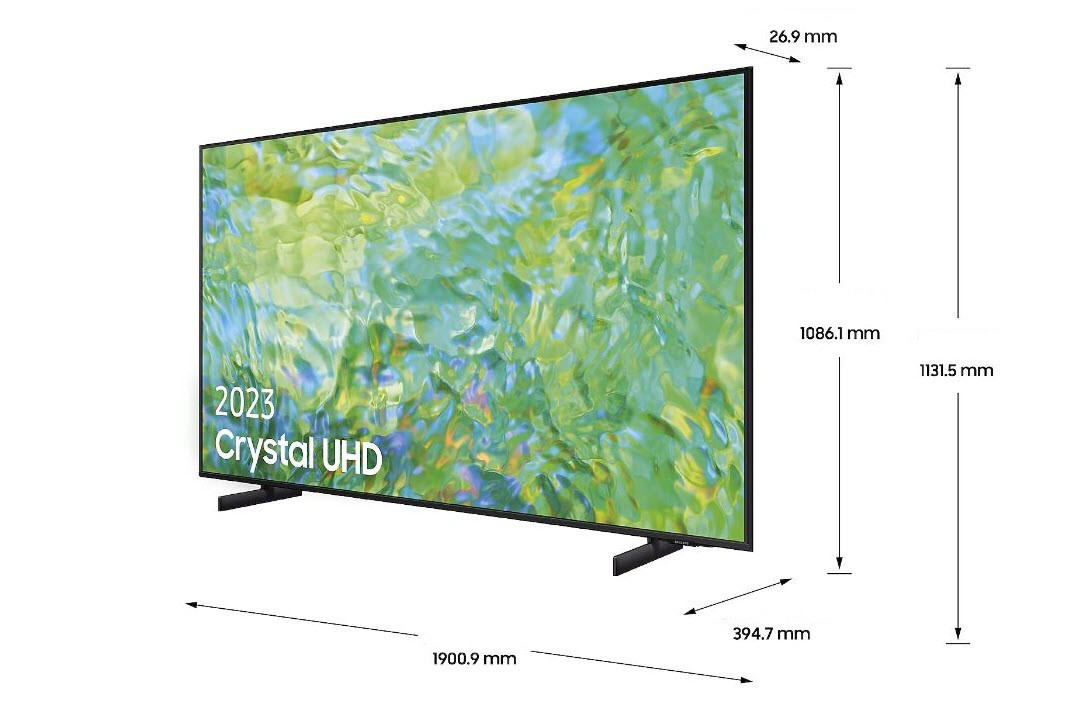
Although LG doesn’t focus on the most overwhelming sizes, it is gaining ground in the large-sized TV segment. One standout model is the LG QNED MiniLED 4K from the Series 91, an 86-inch TV with 4K image quality that initially cost 4,200 euros but can now be found for less than 2,800 euros at retailers like Fnac.
This LG smart TV combines Quantum Dot and Nanocell Plus technologies, featuring MiniLED backlighting similar to the flagship TVs of TCL and Samsung, resulting in more precise color reproduction. The TV’s processor is an α7 utilizing artificial intelligence, providing better brightness control and simulating a 5.1.2 channel surround sound. Additionally, it is compatible with major HDR image formats, including HGIG specific for gaming, and has a Filmmaker mode to view movies as the directors intended.
Some less positive aspects of this TV include its distinctive ‘U’-shaped stand, which may not be adaptable to all furniture due to its depth, and the excessive reflection that can be noticed on the screen, making it less suitable for brightly lit rooms.

Another large-format LG TV is the UHD 4K Series 81, also an 86-inch model, available for purchase at the time of writing this article for 1,400 euros. This mid-range TV can be interesting thanks to technologies like Dynamic Color or Local Contrast, compensating for the limitations of the Direct LED panel by reinforcing color precision and contrast, providing good results as long as it’s not placed in a standard room with either too little or too much light.
In terms of sound, the speakers offer a power of 20 watts, which may be insufficient for demanding users, and adding a soundbar might be a good idea. However, the TV also features several proprietary systems like Clear Voice Pro or LG Sound Sync for an immersive experience.
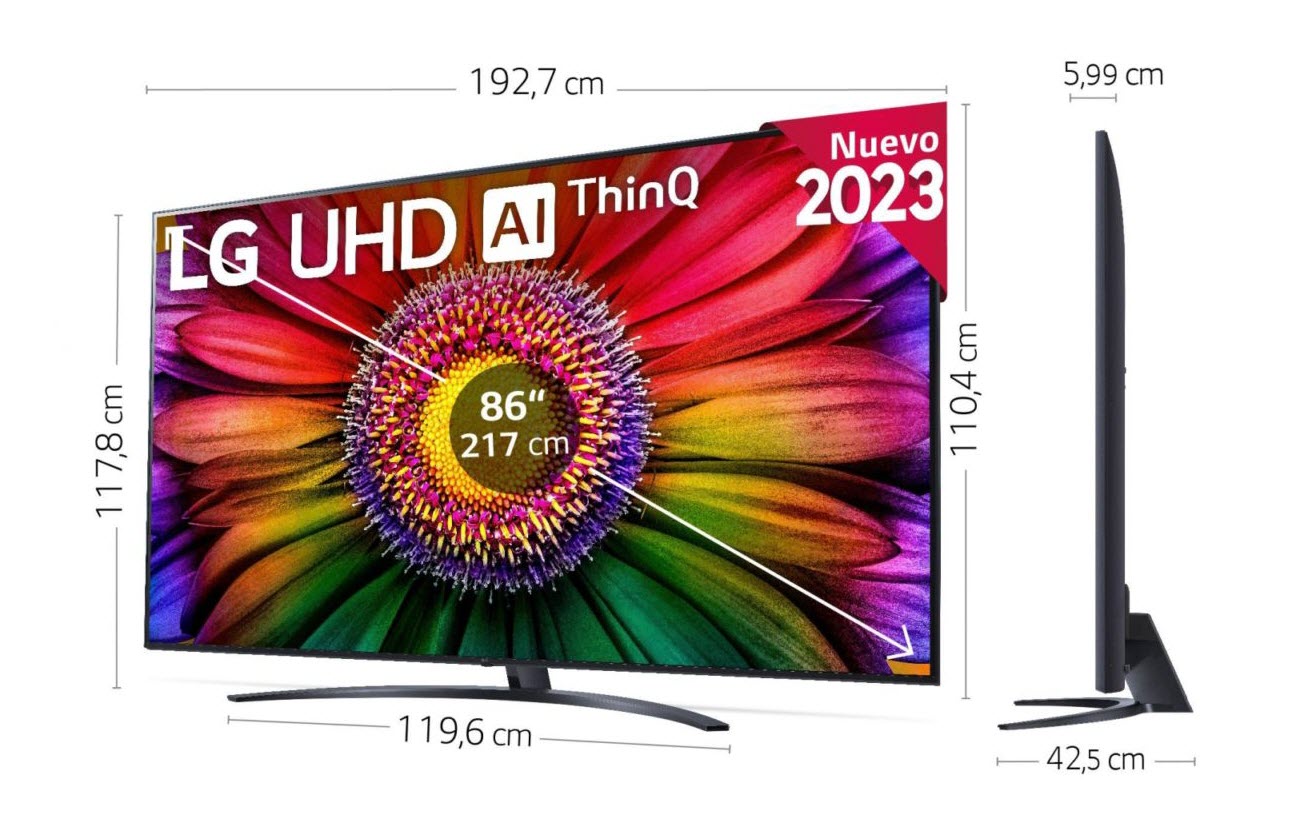
Another manufacturer firmly committed to large-sized TVs is Hisense, which is already showcasing models with over 100 inches. Among the available options is the Hisense Mini-LED 85UXKQ. This 85-inch TV is priced at 3,850 euros, combining MiniLED backlighting with 5,000 local dimming zones, a Hi-View Engine X processor that meticulously controls brightness levels, and Dynamic X-Display screen technology for optimal viewing angles regardless of the TV and viewer’s location.
Its brightness level is its most outstanding feature, excelling in aspects such as contrast, image processing, and emitting powerful sound with a 4.1.2 system featuring side speakers and a built-in subwoofer for an immersive atmosphere during movies and series. It is well-equipped for gamers, offering a PRO gaming mode with a variable refresh rate of 144 Hz and low latency mode, featuring two HDMI 2.1 ports. However, it’s worth noting that some users have reported issues with connectivity or lag when gaming.
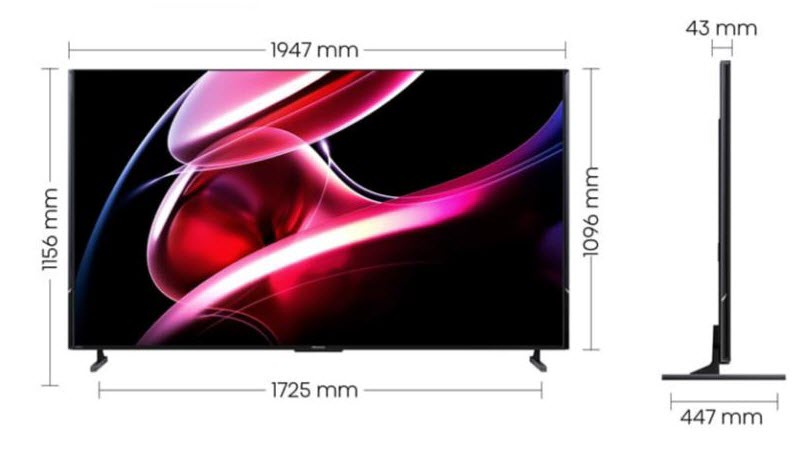
On the other end of Hisense’s catalog, we find the QLED 75E7KQ model, a TV with a slightly smaller diagonal than the others mentioned in this article but stands out for its price. It is available for 725 euros, although it is often found around 800 euros in most stores. Among its main features are Quantum Dot Colour technology, translating to the reproduction of over 1 billion colors on a 4K resolution screen, providing a high-quality experience for movies or video games. It is compatible with Dolby Vision and Dolby Atmos and has a Sports mode supported by artificial intelligence to watch matches with much greater detail.
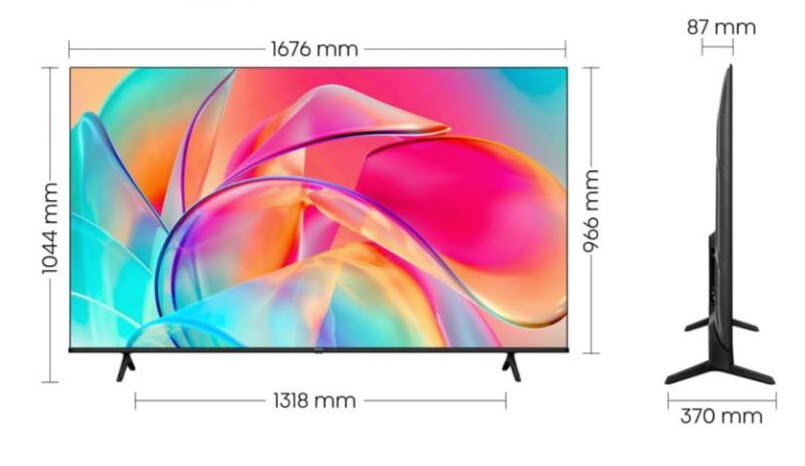
For gaming, it offers more modest features, such as a variable refresh rate of only 60 Hz and no HDMI 2.1 ports (it has three HDMI 2.0 ports), but this is still a large TV that fulfills its purpose.